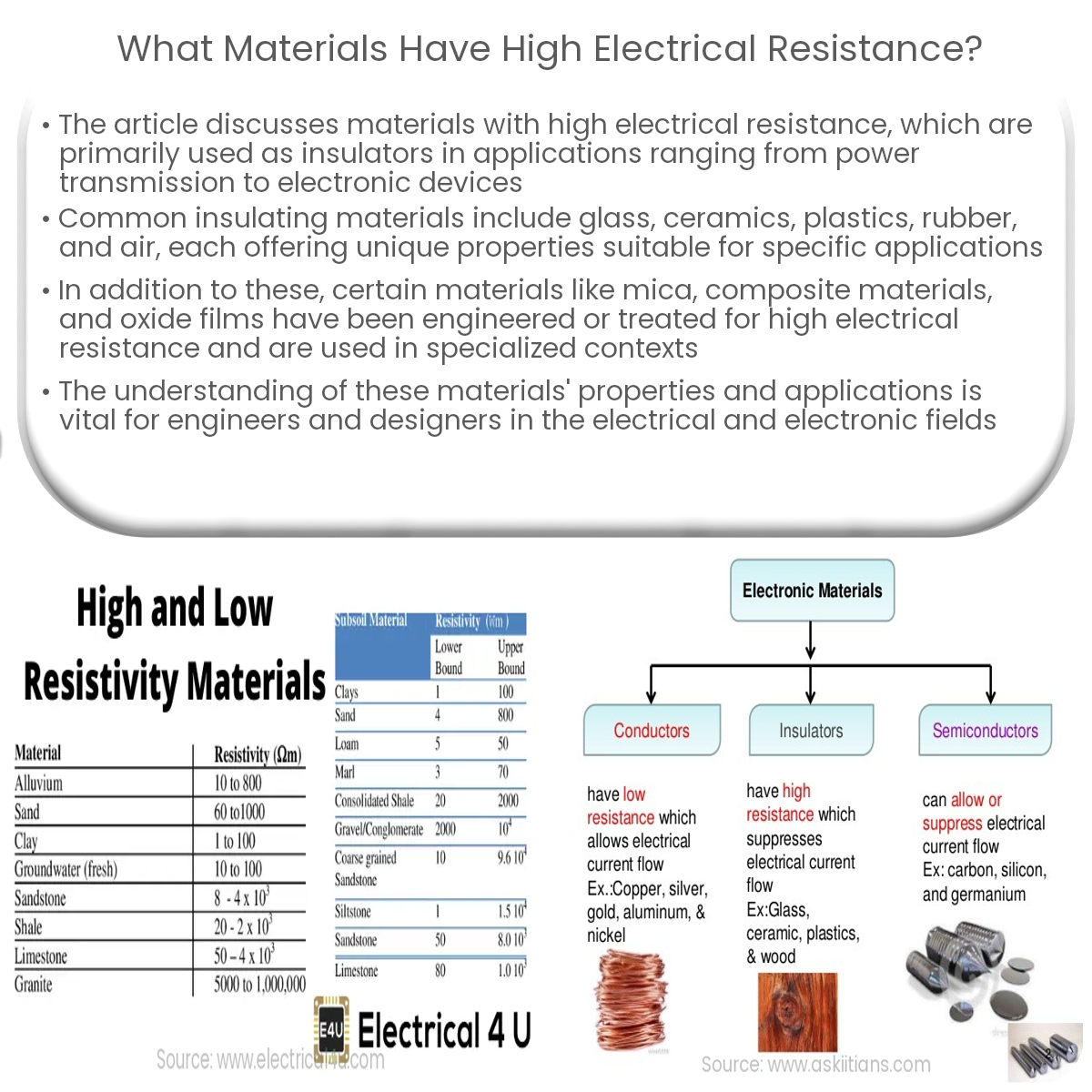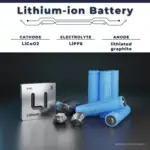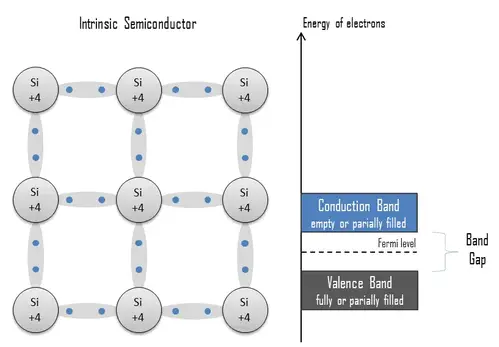Materials with high electrical resistance include glass, ceramics, plastics, rubber, air, mica, composite materials, and oxide films used for insulation.
Materials with High Electrical Resistance
Electrical resistance is the opposition a material presents to the flow of electric current. Materials with high electrical resistance are commonly used as insulators in various applications, from power transmission to electronic devices. This article explores some of the most commonly used materials with high electrical resistance.
Insulators
Insulators are materials that have a high electrical resistance, impeding the flow of electric current. These materials have few free charge carriers and are used to prevent unwanted current flow, provide electrical isolation, and protect against electrical shock. Some common insulators include:
- Glass: Glass is a good insulator because of its amorphous molecular structure and high resistance to electrical current. It is widely used in electrical equipment and insulating applications.
- Ceramics: Ceramic materials, such as alumina, steatite, and porcelain, have high resistance to electrical current and are used for electrical insulation in various applications, including power lines and high-voltage equipment.
- Plastics: Many plastic materials, such as polyethylene, PVC, and Teflon, have high electrical resistance, making them suitable for insulating wires and cables, as well as other electrical components.
- Rubber: Rubber is an excellent insulator due to its high resistance and flexibility. It is commonly used for insulating wires, cables, and other electrical devices.
- Air: Air is also an insulator, although its resistance is relatively low compared to other insulating materials. Nonetheless, it is often used as a natural insulator in various electrical applications.
Specialized High-Resistance Materials
Some materials have been specifically engineered or treated to have high electrical resistance. Examples include:
- Mica: Mica is a silicate mineral with excellent dielectric properties and high electrical resistance. It is used in various electrical and electronic applications, such as capacitors and insulating gaskets.
- Composite Materials: Composite materials, made from a combination of two or more materials with different properties, can be designed to have high electrical resistance. Examples include fiberglass-reinforced plastics and epoxy resins.
- Oxide Films: Some materials, such as aluminum and tantalum, can form oxide films with high electrical resistance. These films are used as insulating layers in electronic devices and capacitors.
Conclusion
Materials with high electrical resistance play a crucial role in various electrical and electronic applications, providing insulation and preventing unwanted current flow. Glass, ceramics, plastics, rubber, and air are common insulating materials, while specialized materials such as mica, composite materials, and oxide films offer additional options for applications requiring high resistance properties. Understanding the properties and applications of these materials is essential for engineers and designers working with electrical and electronic systems.




